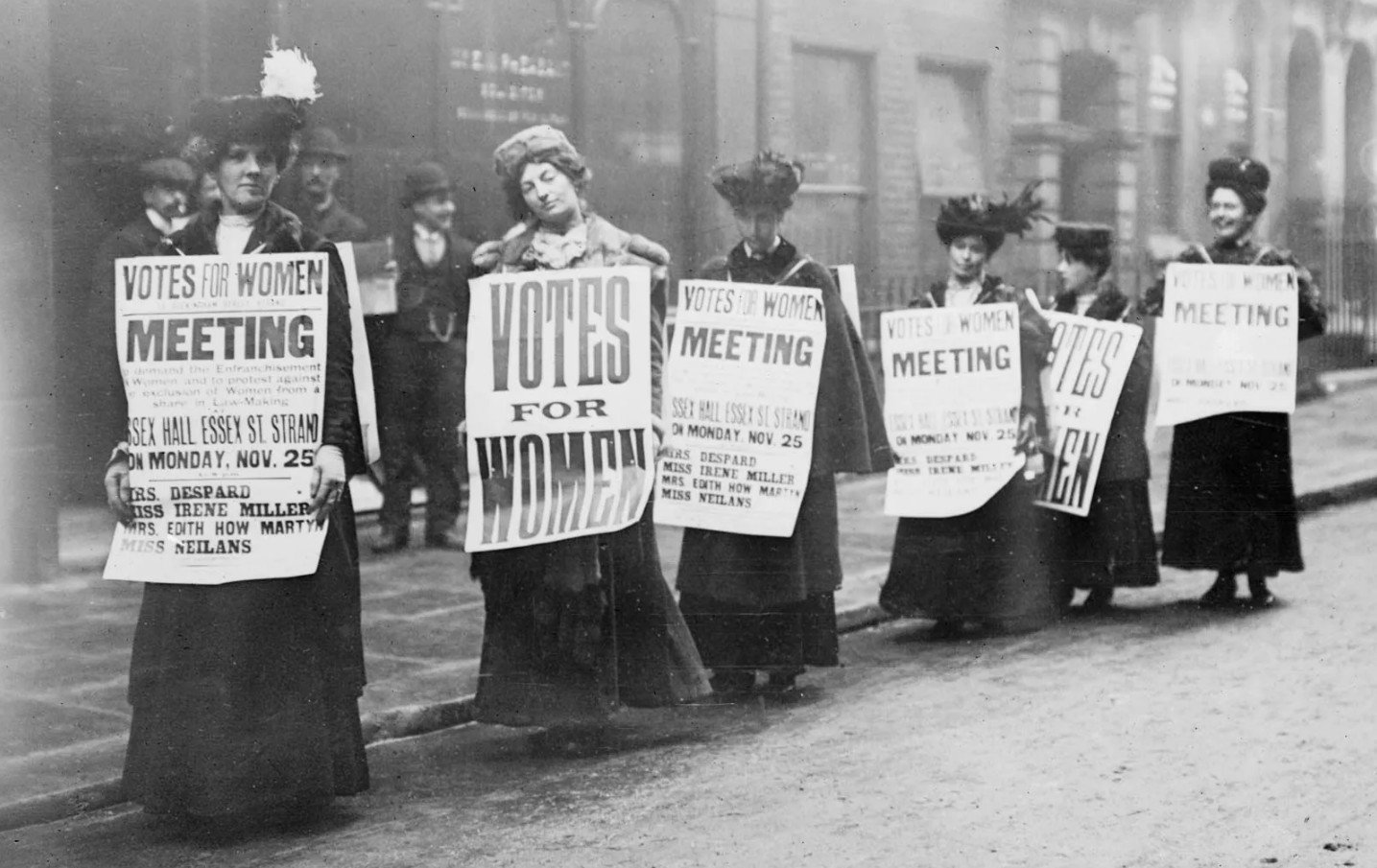Women’s Suffrage
Women’s suffrage in the early 1900s was a critical and transformative movement in the fight for gender equality in the United States. While the movement had begun in the mid-19th century, it gained significant momentum in the 20th century, particularly with the formation of organizations like the National American Woman Suffrage Association (NAWSA) and the National Women's Party (NWP). Women, led by figures such as Susan B. Anthony, Elizabeth Cady Stanton, Carrie Chapman Catt, and later Alice Paul, worked tirelessly to secure voting rights. Their efforts included organizing rallies, petitions, and marches, and enduring harsh opposition and persecution. The movement was characterized by an intersection of tactics, from peaceful lobbying to more radical protests.
By 1917, women in New York and other states had gained the right to vote in local and state elections, but it was not until the passage of the 19th Amendment in 1920 that voting rights were granted to women nationwide. The amendment granted women the constitutional right to vote, marking a monumental achievement after decades of activism. The women’s suffrage movement in the United States was a pivotal struggle for gender equality, seeking the right for women to participate in the democratic process by voting. Mabel Lee, though an advocate for women’s rights and equality, was affected by the racial and immigration barriers that limited her participation in this historic shift. While the suffrage movement culminated in women gaining the right to vote in New York in 1917 and nationwide with the 19th Amendment in 1920, Lee was unable to cast her vote. Due to the Chinese Exclusion Act, which prevented Chinese immigrants from becoming naturalized citizens, she was excluded from the rights granted by suffrage. The racial discrimination of the time denied her the ability to vote, highlighting the intersection of racial and gender inequality that Lee fought against throughout her life.
Although women won the right to vote in New York in 1917 and across the United States with the ratification of the 19th Amendment in 1920, Lee was unable to vote due to racial discrimination against Chinese people. The Chinese Exclusion Act, which prevented Chinese immigrants from becoming U.S. citizens, barred her from participating in the democratic process, despite her active involvement in advocating for gender equality and social justice. This racial exclusion displays the complex intersection of race and gender in the fight for suffrage and equality.

Discrimination in Press?
Insert - what is being depicted here…then why the depiction of white women vs. other identities of women? How are Asian women being depicted at the time?
Women’s Suffrage and Racial Discrimination Today
Women's suffrage and racial discrimination remain pressing issues today. While women gained the right to vote in many countries, they still face challenges such as underrepresentation in leadership roles and ongoing efforts to suppress voting rights. Racial discrimination persists through systemic racism, economic inequality, and police brutality, particularly affecting marginalized communities of color.
Advocacy groups like #MeToo, which addresses sexual harassment, and Black Lives Matter (BLM), which fights against police brutality and racial injustice, are actively working to combat these societal norms. Additionally, organizations like The National Organization for Women (NOW) and The ACLU continue to advocate for women's rights and racial justice. Despite progress, the fight for equality continues today.
One prominent Asian advocacy group is the Asian American Legal Defense and Education Fund (AALDEF). AALDEF works to protect and promote the civil rights of Asian Americans through litigation, advocacy, and community education. They focus on issues such as racial discrimination, voting rights, immigrant rights, and economic justice. Another organization that focuses on racial equality is the Asian Pacific American Labor Alliance (APALA), which advocates for the rights of Asian and Pacific Islander workers and works to eliminate discrimination in the workplace. Both of these groups are vital in advancing the rights of Asian communities and fighting against racial discrimination.
